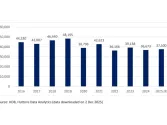
Customisation, online sales drive growth in home furniture market
Fluctuating labor costs and raw material prices remain significant challenges for manufacturers.
The global home furniture market is projected to grow by $95.7b from 2024 to 2028, driven by a surge in online sales and rising demand for customised furniture.
According to a report by Technavio, the market is expected to expand at a compound annual growth rate of 4.72% during this period.
Key segments of the market include living room, dining room, bedroom, and kitchen furniture, with specialty stores and online retail stores leading the sector.
Growth in the residential construction market is also contributing to an uptick in furniture demand. Trends such as eco-friendly furniture, including formaldehyde-free sofa sets and recycled textiles, continue to gain traction.
Additionally, ready-to-assemble furniture and smart furniture, including ergonomic chairs and gaming tables, are on the rise. Multi-purpose and portable furniture, as well as the integration of smart sensing technology, are shaping consumer preferences.
Customisation is a standout trend in the home furniture market, with consumers increasingly seeking personalised furniture solutions. Industry leaders like IKEA and Ethan Allen are responding to this demand by offering customisable fabric and design options.
However, the industry faces competition from unorganized market players, which can impact market stability.
The pricing of home furniture products is influenced by several factors, including manufacturing, labor, and raw material costs. Fluctuations in the prices of key raw materials, such as steel, wood, and plastic, are directly affecting both the cost of furniture and the profit margins of manufacturers.

















 Advertise
Advertise





